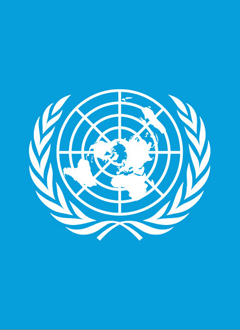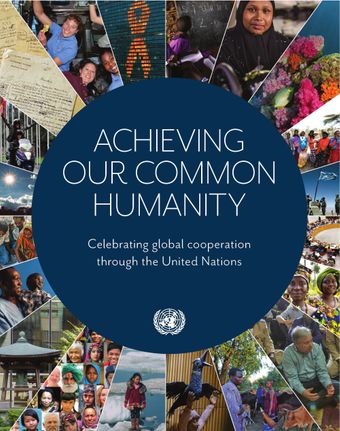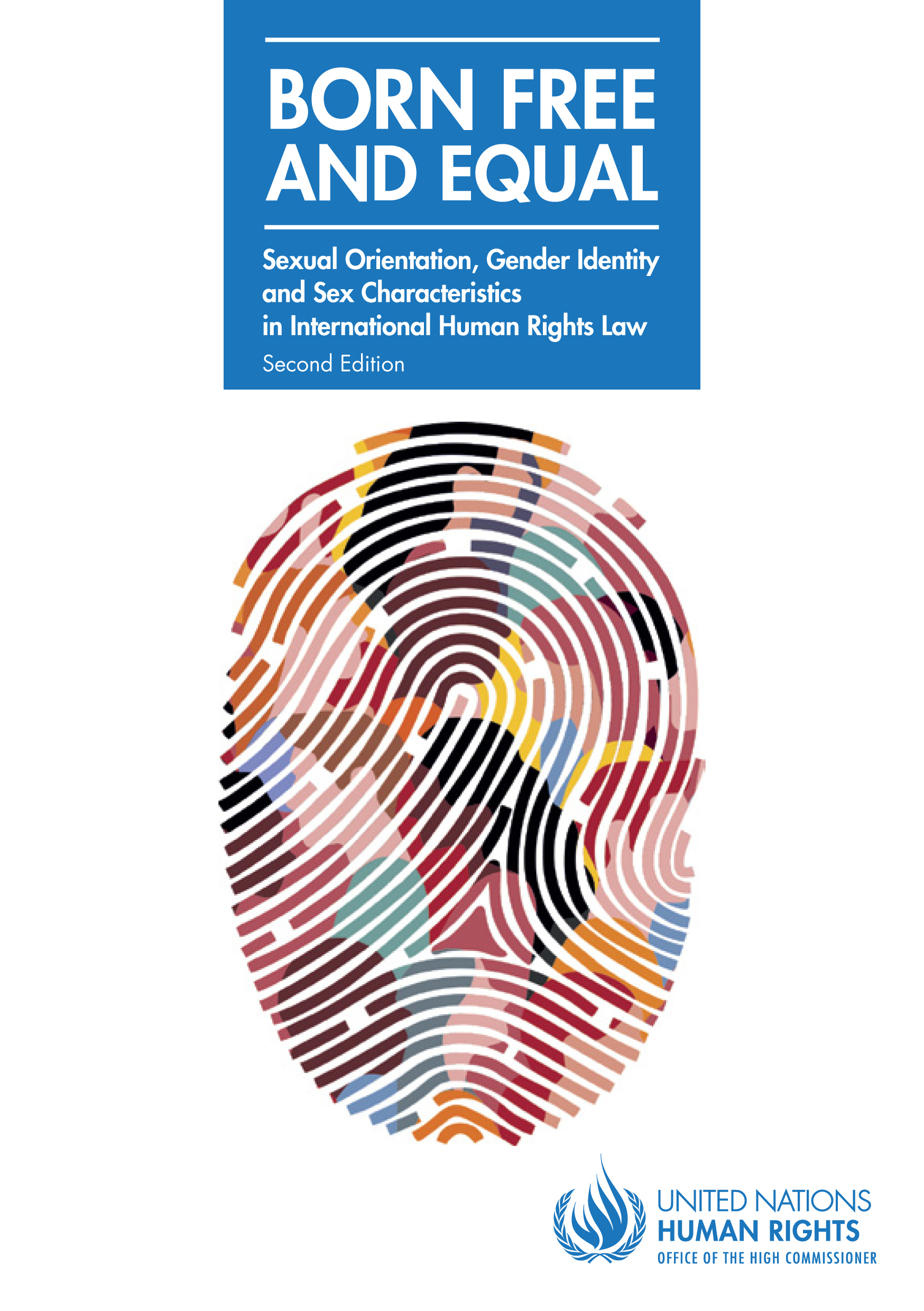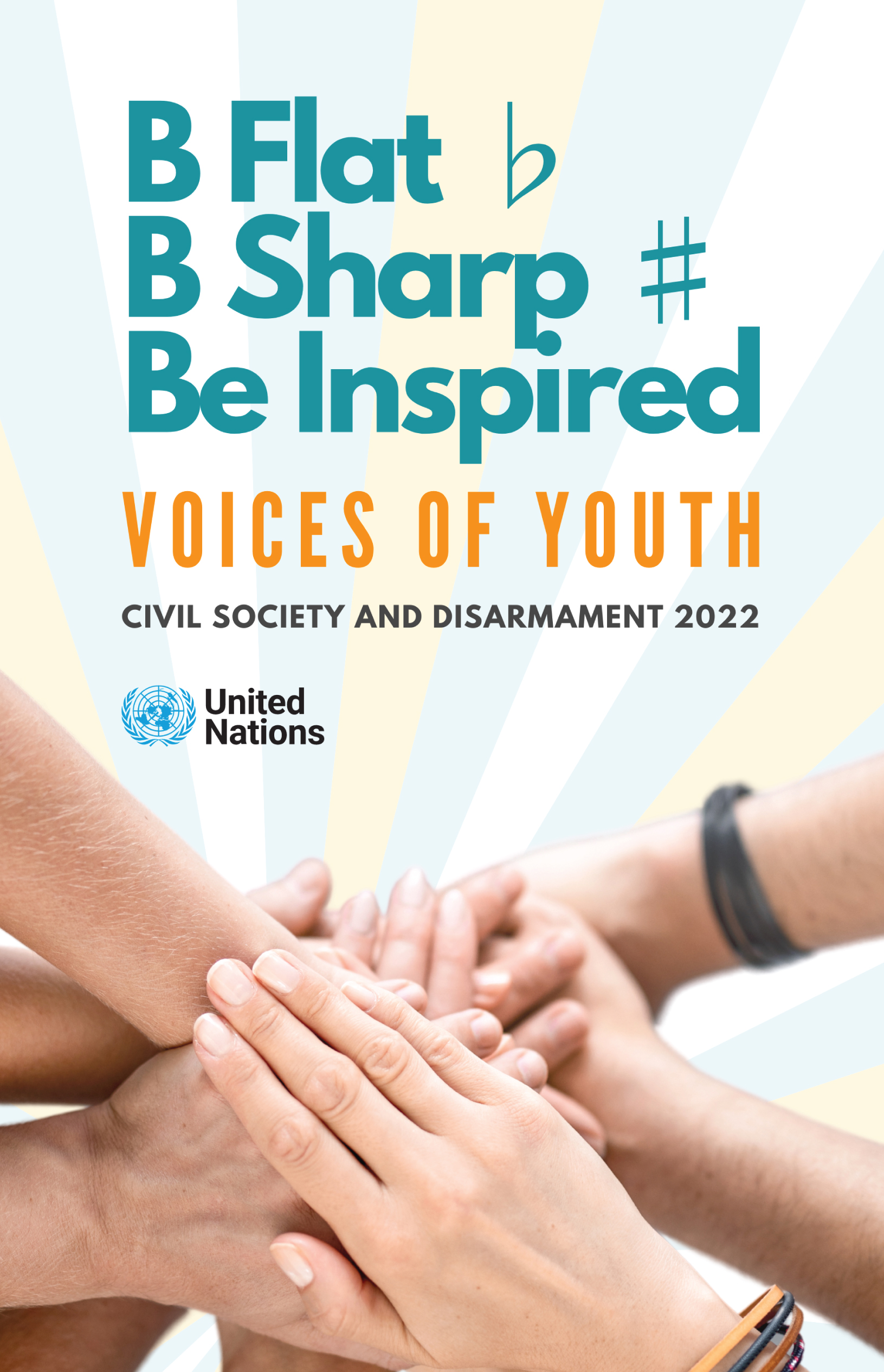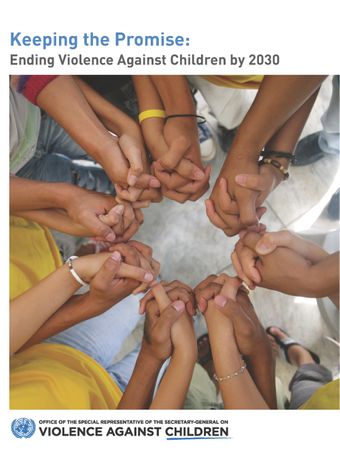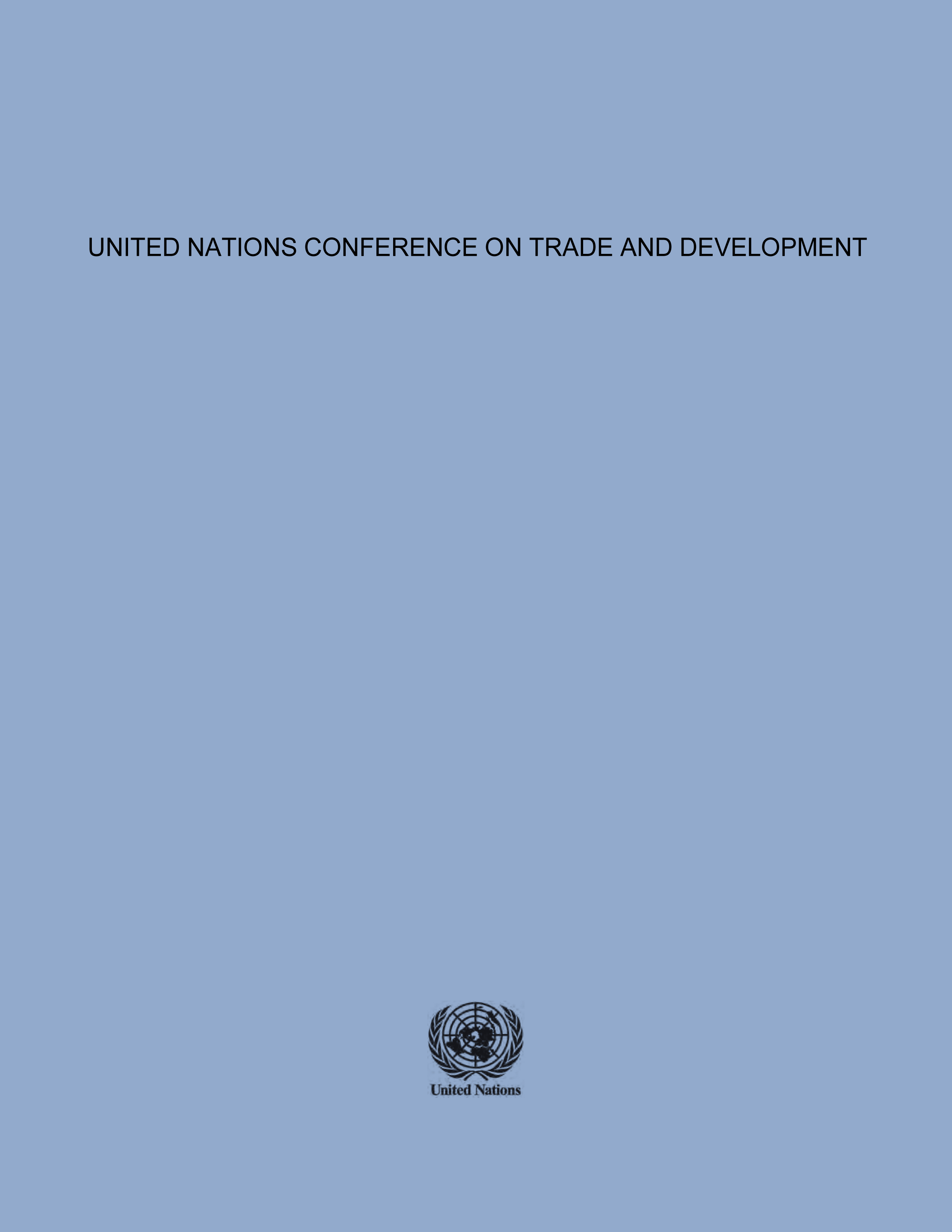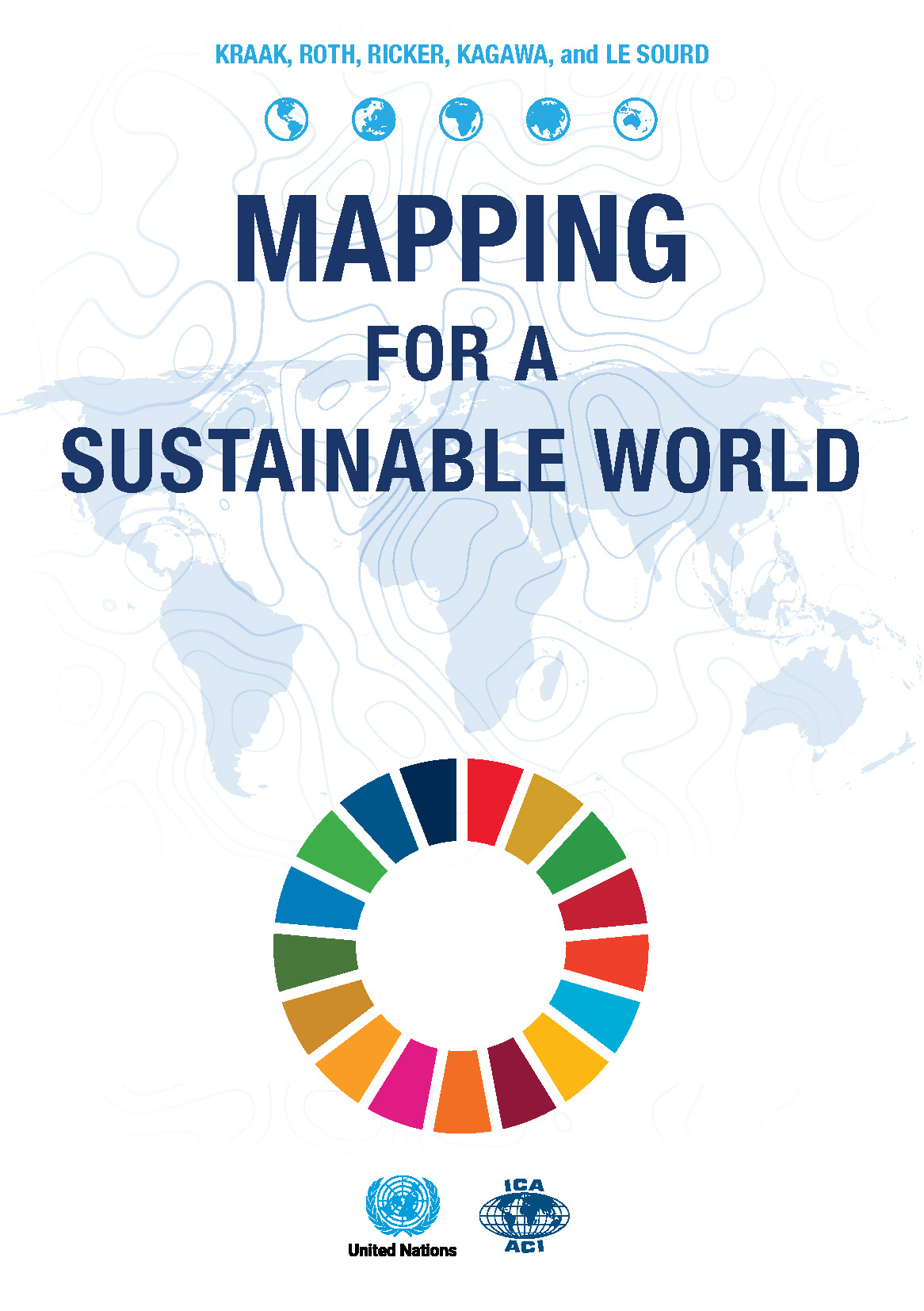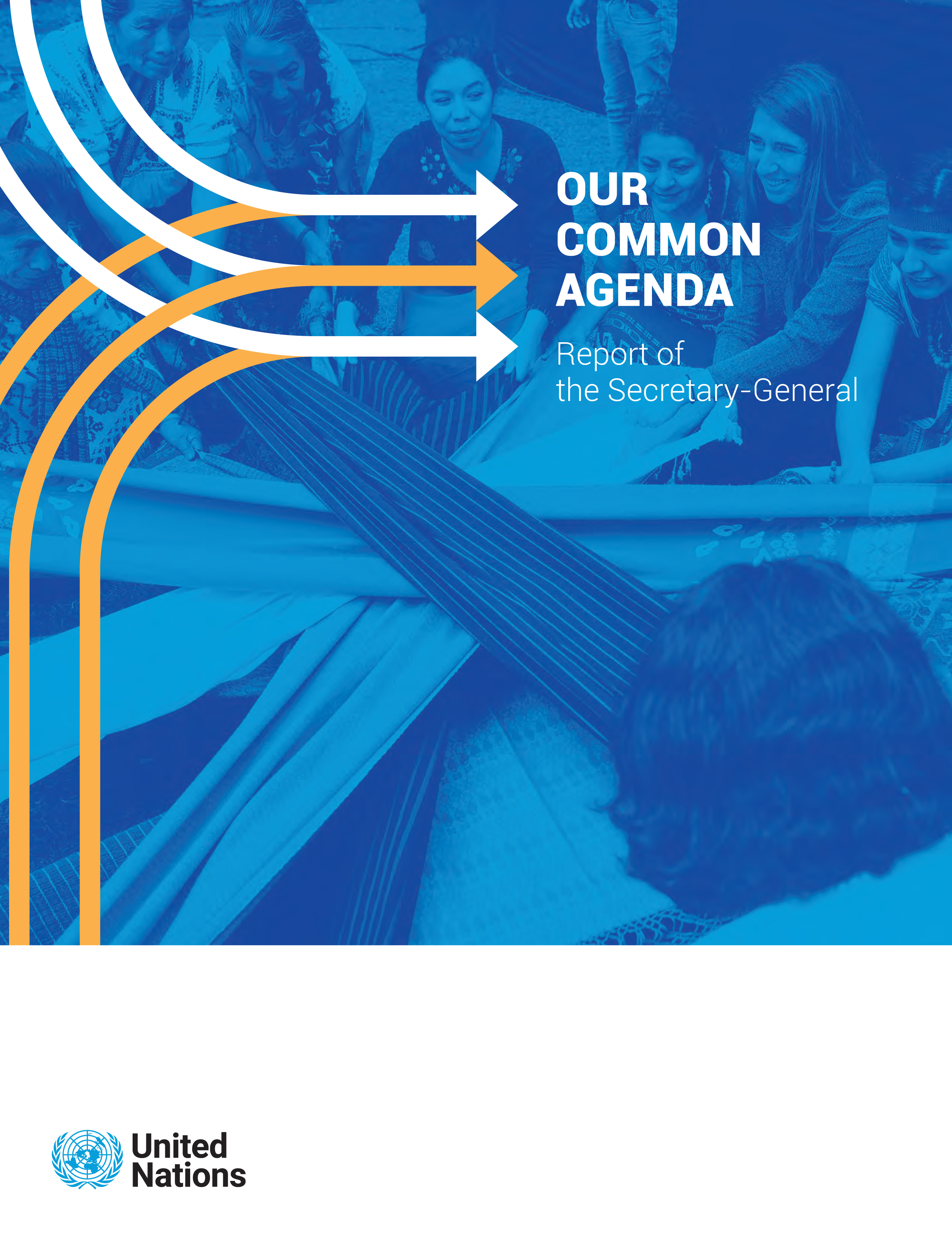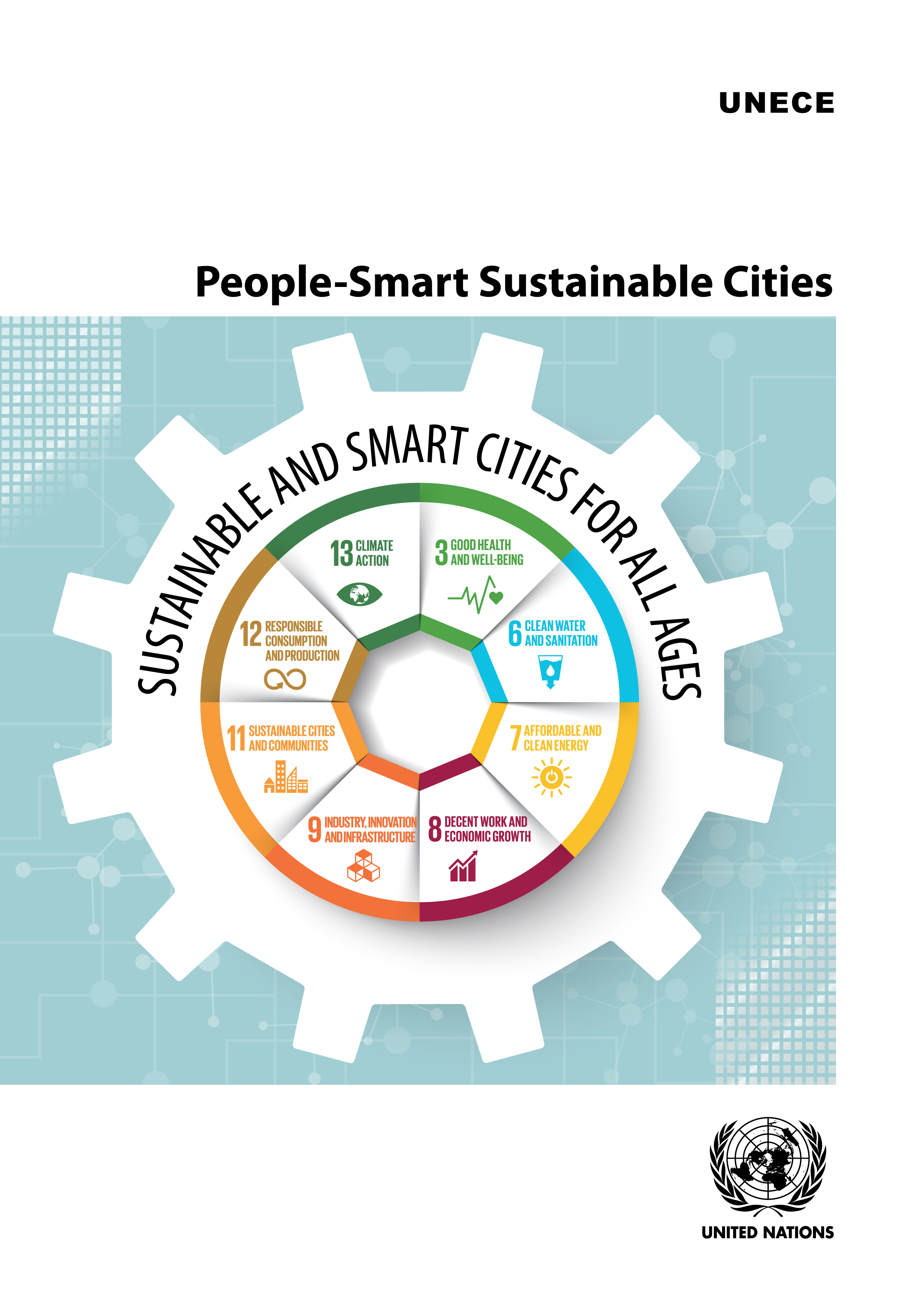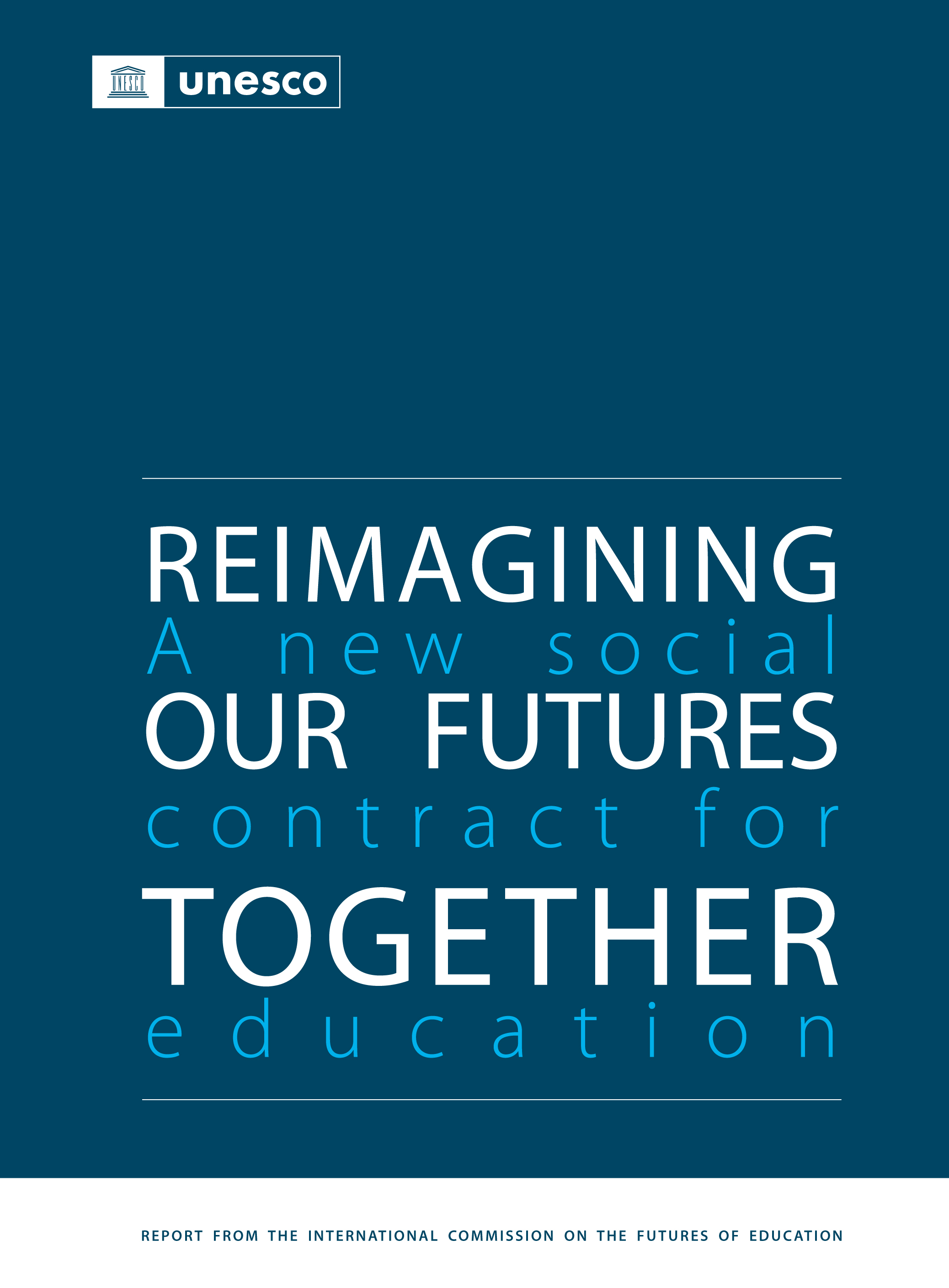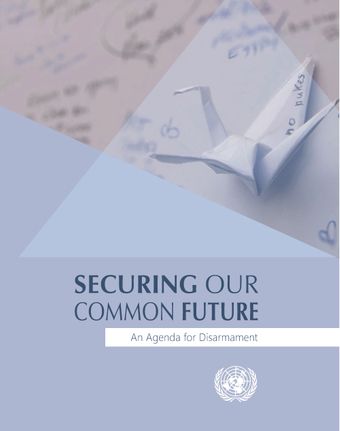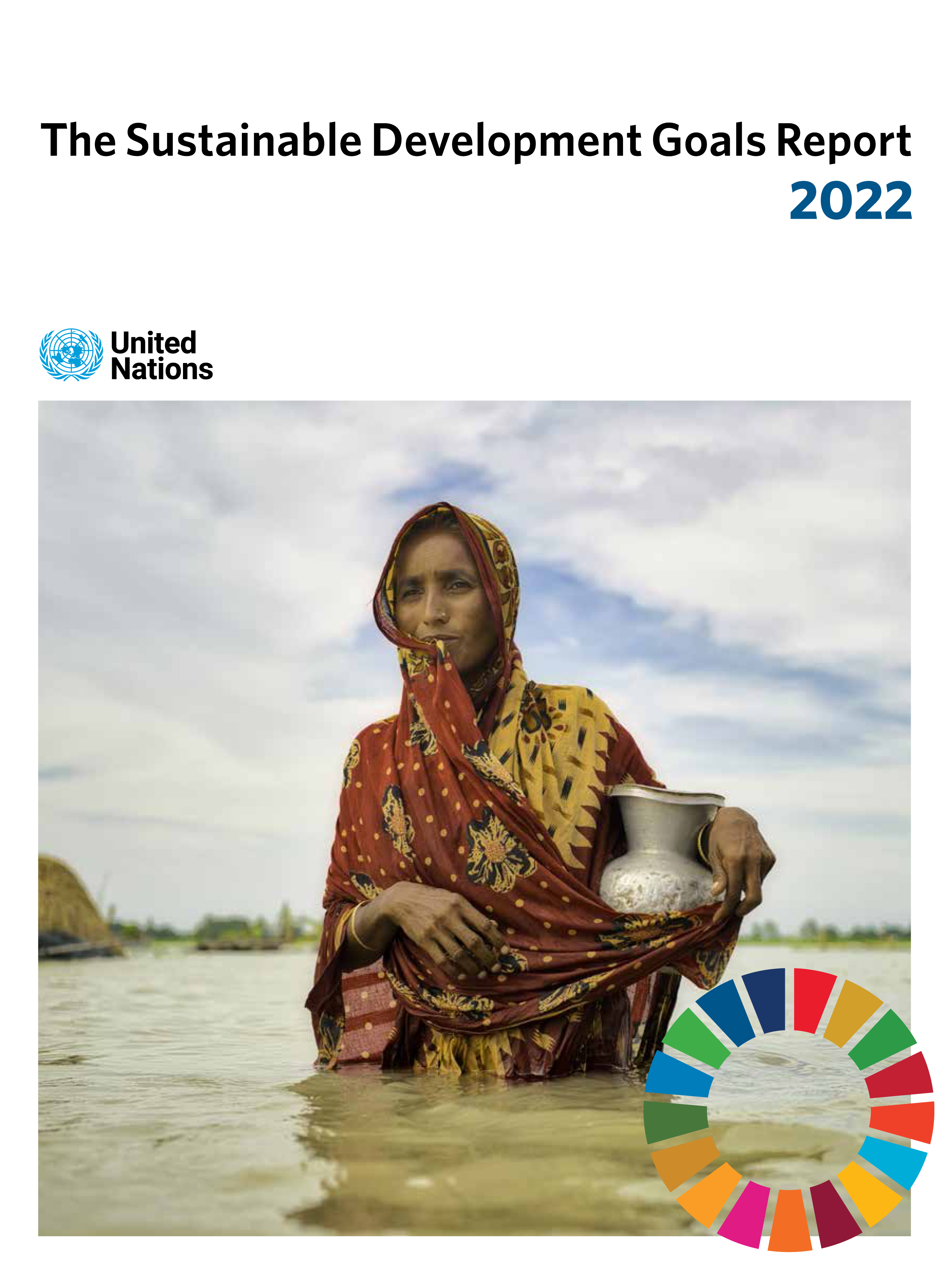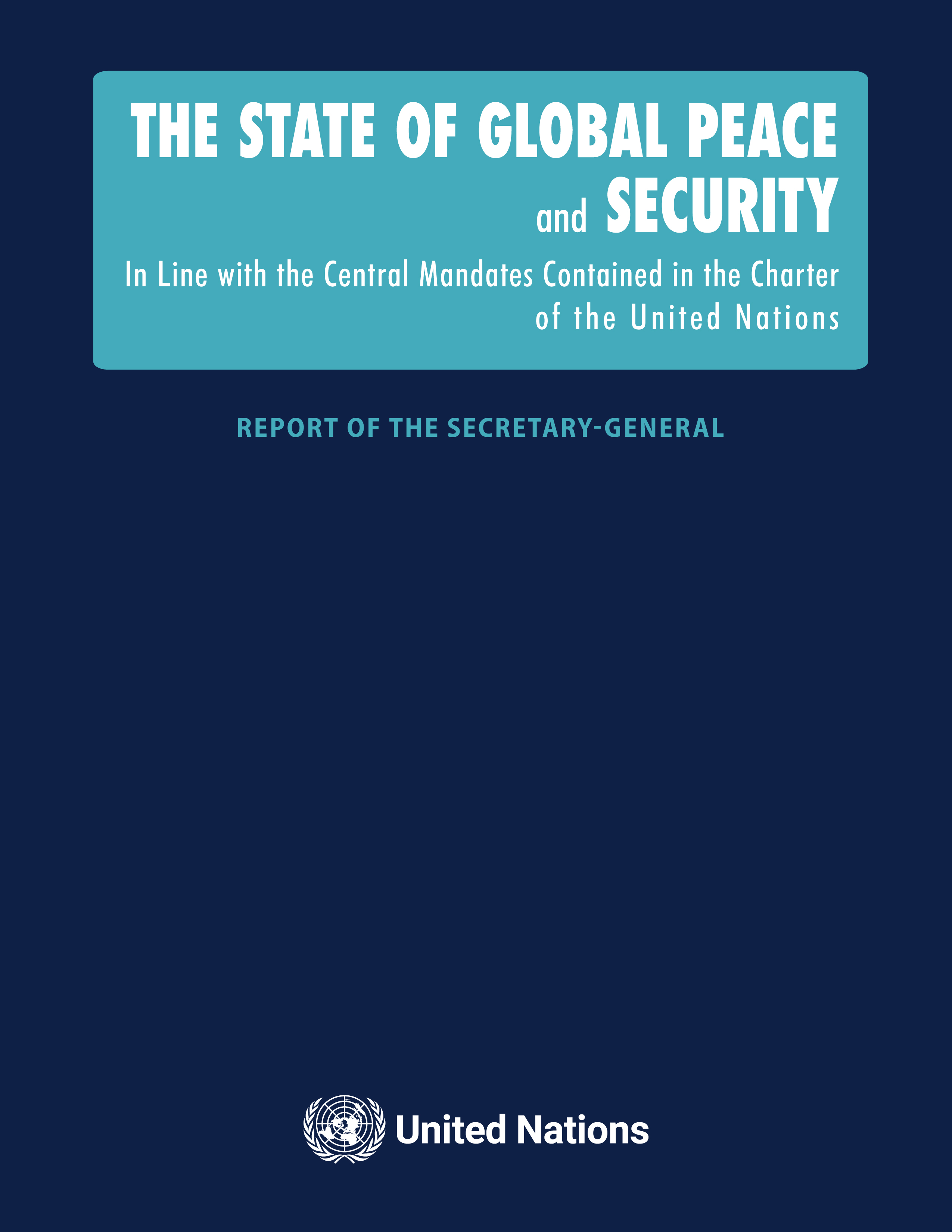International Day of Peace
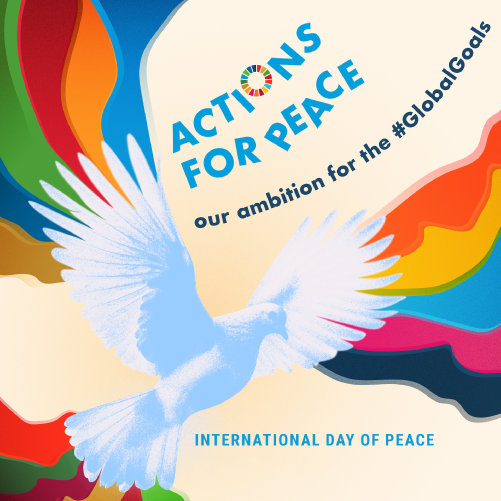
This year’s theme is Actions for Peace: Our Ambition for the #GlobalGoals. It is a call to action that recognizes our individual and collective responsibility to foster peace. Fostering peace contributes to the realization of the Sustainable Development Goals (SDGs) and achieving the Sustainable Development Goals will create a culture of peace for all.
Collection Contents
17 条搜索结果
-
-
A New Agenda for Peace
Our Common Agenda Policy Brief 9
更多 更少The challenges that we face can be addressed only through stronger international cooperation. The Summit of the Future, in 2024, is an opportunity to agree on multilateral solutions for a better tomorrow, strengthening global governance for both present and future generations. The UN Secretary-General has been invited to provide inputs to the preparations for the Summit in the form of action-oriented recommendations, building on the proposals contained in his report entitled “Our Common Agenda”, which was itself a response to the declaration on the commemoration of the seventy-fifth anniversary of the United Nations. The present policy brief is one such input. Peace remains an elusive promise for many around the world. Conflicts continue to wreak destruction, while their causes have become more complex and difficult to resolve. This may make the pursuit of peace appear a hopeless undertaking. However, in reality, it is the political decisions and actions of human beings that can either sustain or crush hopes for peace. War is always a choice: to resort to arms instead of dialogue, coercion instead of negotiation, imposition instead of persuasion. Therein lies our greatest prospect, for if war is a choice, peace can be too. It is time for a recommitment to peace. In the present document, the Secretary-General offers his vision of how we can make that choice.
-
-
-
Achieving our Common Humanity
Celebrating Global Cooperation Through the United Nations
更多 更少作者: United NationsAchieving our Common Humanity: Celebrating Global Cooperation through the United Nations portrays landmark accomplishments of the United Nations in supporting peace and security, promoting and protecting human rights, fostering economic and social development, and shaping international law. Amply illustrated with photographs, charts, maps and infographics, and featuring a wealth of information on how the United Nations serves the peoples of the world, this book depicts a wide range of challenges that the Organization has met and successful initiatives that it has conceived and spearheaded as a matter of common purpose among nations in favour of collective human progress. Its rich tapestry of stories explores the diverse ways in which the United Nations fights poverty, combats climate change and protects the environment, undertakes to transform conflicts into peace, helps refugees thrive, supports sharing the benefits of technology, works to stop the spread of infectious diseases and reduce the risk of disasters, and helps render justice for all and ensure the rights of women and children. While recounting decisive innovations at the level of global policy and international agreement, Achieving our Common Humanity also provides a view of how such changes have significantly improved the lives of affected individuals around the world. These remarkable stories show how the United Nations, with its ambitious and evolving vision for the shared prosperity of people and planet, is helping create a better world for everyone.
-
-
-
Born Free and Equal
Sexual Orientation, Gender Identity and Sex Characteristics in International Human Rights Law - Second Edition
更多 更少This second edition of Born Free and Equal takes into account developments since the publication of the first edition in 2012, including decisions by the United Nations, and regional and national human rights bodies. It sets out the source and scope of the legal obligations of Member States in respect of the rights of LGBTI people, and also integrates, for the first time, recommendations in respect of the rights of intersex persons. It is designed as a tool for States, to help them better understand the nature of their obligations and the steps required to meet them, as well as for civil society activists, human rights defenders and others seeking to hold Governments to account for breaches of international human rights law.
-
-
-
Civil Society and Disarmament 2022
B Flat ♭, B Sharp ♯, Be Inspired – Voices of Youth
更多 更少Launched in 2019, the #Youth4Disarmament (Y4D) initiative of the United Nations Office for Disarmament Affairs (UNODA) seeks to engage, educate and empower young people to facilitate their meaningful contribution to disarmament efforts. The “Spotlight Stories” section of the Y4D community website (https://www.youth4disarmament.org/youth_spotlight) offers a space for young people to share – in their own voices and from their own perspectives – why the work of disarmament is critical to building peace and how they are helping push the field forward. This compilation of stories reveals the hope for a better future shared by members of the largest generation in history, and it shows some of the diverse ways they are finding to pursue peace through disarmament in the twenty-first century.
-
-
-
Keeping the Promise
Ending Violence Against Children by 2030
更多 更少作者: United NationsThis report gathers expert analysis from a broad cross-section of stakeholders who are committed to bringing this unacceptable situation to an end. It draws out common findings and perspectives that demonstrate increasing cohesion in the action taken across regions to end violence against children. It shows how people the world over are stepping up to prevent and respond to violence and to protect children from its impact. In addition this report demonstrates that success breeds success and there has been real momentum since the 2015 adoption of the 2030 Agenda. Furthermore, this report asks a key question: if the costs of inaction are so high and the solutions are known, why does violence against children continue to take place? What must we do to move better, faster and further in our urgent quest to bring it to an end? We hope that this report, by recognizing progress made, demonstrating what is needed and highlighting what can be done, will chart a course for accelerated action and for an ever-growing movement to end the scourge of violence.
-
-
-
Linking Trade and Biodiversity
更多 更少UNCTAD convened the 5th BioTrade Congress “Linking trade and biodiversity” to provide a platform for substantive discussion among trade, biodiversity and development decision-makers and practitioners to support the 2030 Agenda and the 2050 Vision for Biodiversity of “Living in Harmony with Nature” and provide inputs to the post 2020 Global Biodiversity Framework. The congress enabled practitioners to share best practices and lessons learned in implementing innovative business and trade models to help upscale biodiversity conservation, sustainable trade of biodiversity-based goods and services, and increase private sector engagement in the biodiversity agenda. This publication summarizes the key discussions and conclusions of the 5th BioTrade Congress.
-
-
-
Land Restoration for Achieving the Sustainable Development Goals
An International Resource Panel Think Piece
更多 更少Land restoration has tremendous potential to help the world limit climate change and achieve its aims for sustainable development. In its latest study, the International Resource Panel finds positive spin-offs to support all 17 Sustainable Development Goals agreed to by the world’s nations as part of the 2030 Agenda for Sustainable Development.
-
-
-
Mapping for a Sustainable World
更多 更少作者: United NationsThis is a joint publication by the United Nations and the International Cartographic Association on how cartography can help to better understand, share and communicate the status of the Sustainable Development Goals (SDGS). It demonstrates how effective mapping techniques can reduce complexity to reveal relevant spatio-temporal patterns, including global population growth, socioeconomic disparities, and climate change. Such visualisations make tangible the challenges to and successes in achieving the SDGs, facilitating public awareness thereof. The publication describes foundational design decisions in cartography, introduces the SDGs in relation to geographic datasets, alongside the common map types and diagrams for representing SDG indicators, and discusses consideration for map use environments. By integrating geospatial and statistical data of the Global SDG Indicators Database, cartography can enhance action and decision-making at the local and national level and help create a sustainable world.
-
-
-
Making Peace with Nature
A Scientific Blueprint to Tackle the Climate, Biodiversity and Pollution Emergencies
更多 更少The first UNEP synthesis report presents a scientific blueprint for how climate change, biodiversity loss and pollution can be tackled jointly within the framework of the Sustainable Development Goals. The report serves to translate the current state of scientific knowledge into crisp, clear and digestible facts-based messages that all the world’s citizens can relate to and follow up on. It first provides an Earth diagnosis of current and projected human-induced environmental change, putting facts and interlinkages in perspective with smart infographics. Building on this diagnosis, the report identifies the shifts needed to bridge the gap between current activities and those necessary to achieve sustainable development. Ultimately, the analysis is anchored in current economic, social and ecological realities and framed by economics and the 2030 Agenda for Sustainable Development. By synthesizing the latest scientific findings from a range of recent global environmental assessments, the report communicates the current status of the world’s urgent issues and explores the opportunities to solve them.
-
-
-
Our Common Agenda - Report of the Secretary-General
更多 更少作者: United NationsOn the seventy-fifth anniversary of the United Nations, the world has faced its biggest shared test since the Second World War in the coronavirus disease (COVID-19) pandemic. Yet while our welfare, and indeed the permanence of human life, depend on us working together, international cooperation has never been harder to achieve. This report answers a call from UN Member States to provide recommendations to advance our common agenda and to respond to current and future challenges. Its proposals are grounded in a renewal of the social contract, adapted to the challenges of this century, taking into account younger and future generations, complemented by a new global deal to better protect the global commons and deliver global public goods. Through a deepening of solidarity—at the national level, between generations, and in the multilateral system—Our Common Agenda provides a path forward to a greener, safer and better future.
-
-
-
People-Smart Sustainable Cities
更多 更少This publication advocates a “cities-based” approach to sustainable development which recognizes the central and integrating role that cities and urban living play in developing sustainability. It highlights that, similarly to the financial crisis of 2008, the COVID-19 (coronavirus) pandemic has shown that different cities have different capacities to cope with crises. Both crises disproportionally affected different cities and population groups; the most vulnerable suffering most. Cities need to develop innovative methods to confront infectious diseases without relying on drastic lockdown restrictions.
-
-
-
Reimagining our Futures Together
A New Social Contract for Education
更多 更少The interwoven futures of humanity and our planet are under threat. Urgent action, taken together, is needed to change course and reimagine our futures. Education, long acknowledged as a powerful force for positive change, has new, urgent and important work to do. This report, two years in the making, invites governments, institutions, organizations, and citizens around the world to forge a new social contract for education that will help us build peaceful, just, and sustainable futures.
-
-
-
Shaping the Trends of Our Time
Report of the UN Economist Network for the UN 75th Anniversary
更多 更少This report analyzes how five megatrends (climate change, emerging and frontier technologies, demographic trends, inequalities, and urbanization) and their drivers, individually and in combination, transform societies and affect the ability of countries to achieve the SDGs. However, the Agenda is already offtrack. The devastating impacts of the COVID-19 (coronavirus) crisis have further diminished prospects for achieving the SDGs, with the greatest adverse impacts falling on countries and people least able to protect themselves, and already at greatest risk of being left behind. Consideration is given to the interlinkages among trends and how these trends can be fundamentally shaped by policy so that their individual and collective impacts support sustainable development in its various dimensions. The report concludes by identifying a range of policies and interventions that could be effective in shifting the evolution of the megatrends, and establishing the principles that should guide the choice of policies in countries.
-
-
-
Securing Our Common Future
An Agenda for Disarmament
更多 更少作者: United NationsThe Secretary-General announced on 24 May 2018 his Agenda for Disarmament, which outlines a set of practical measures across the entire range of disarmament issues, including weapons of mass destruction, conventional arms and future weapon technologies. It seeks to generate fresh perspectives and to explore areas where serious dialogue is required to bring disarmament back to the heart of our common efforts for peace and security.
-
-
-
The Sustainable Development Goals Report 2022
更多 更少The Sustainable Development Goals Report 2022 presents how far we have come towards reaching the 17 Sustainable Development Goals (SDGs). This seventh edition of the annual report also looks at the trends since 2015 and impact of COVID-19 on the progress. It uses the latest available data and inputs from custodian agencies of the United Nations system other international agencies and is prepared by the Statistics Division of the Department of Economic and Social Affairs.
-
-
-
The State of Global Peace and Security
In Line with the Central Mandates Contained in the Charter of the United Nations – Report of the Secretary General
更多 更少作者: UN DPPAThis report highlights the evolving nature of armed conflict and violence, examining seven major trends related to global peace and security today. It notes areas of progress and in which solutions are still wanting, as well as opportunities and persistent challenges faced by the international community. It subsequently serves as a contribution to the reflections that will take place during the 75th anniversary of the United Nations and throughout the Nelson Mandela Decade of Peace. In that regard, it also serves to honour the spirit and wisdom of one of the world’s great humanists. As Mr. Mandela himself declared, “peace is not just the absence of conflict; peace is the creation of an environment where all can flourish, regardless of race, colour, creed, religion, gender, class, caste or any other social markers of difference”.
-
-
-
Universal Declaration of Human Rights
Dignity and Justice for All of Us
更多 更少作者: United NationsThe Universal Declaration of Human Rights (UDHR) is the first international agreement setting out freedoms, rights and entitlements for all humanity to claim. It emphasizes the inextricable relationship between fundamental freedoms and social justice, and their connection with peace and security. The General Assembly of the United Nations proclaims this Universal Declaration of Human Rights as a common standard of achievement for all peoples and all nations, to the end that every individual and every organ of society, keeping the UDHR constantly in mind, shall strive by teaching and education to promote respect for these rights and freedoms and by progressive measures, national and international, to secure their universal and effective recognition and observance, both among the peoples of Member States themselves and among the peoples of territories under their jurisdiction.
-

